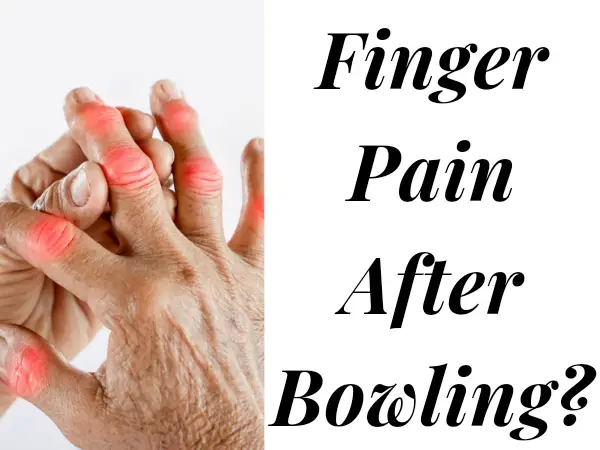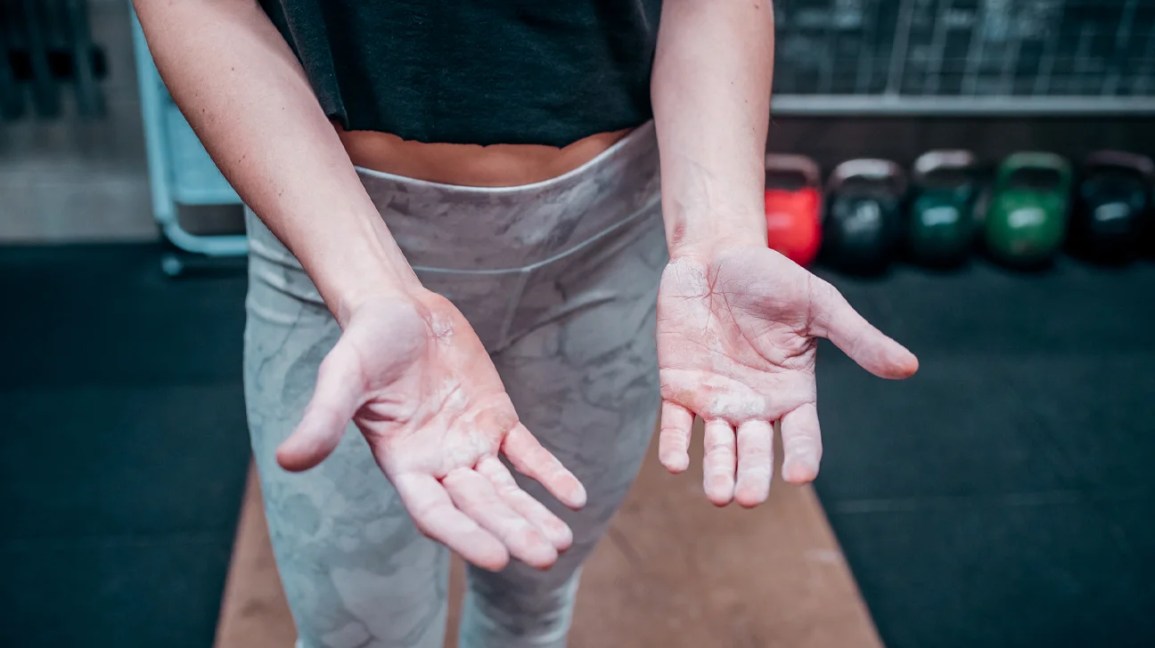
Have you just finished a long bowling session? Where are you feeling the pain? When bowling, your shoulder, arm, forearm, wrist, fingers, feet, knees, legs— a lot of your body parts coordinates. So whether you are a regular or an irregular bowler, it is very common for bowlers to injure any parts of their bodies.
You will be surprised to know that middle and ring finger pain after bowling is a bit more common than you think. The more you bowl, the higher the chances of a finger injury. So if you have a certain pain in your fingers after bowling you have come to the right place. Stay tuned, my friends!
How do you stop your fingers from hurting when bowling?
Is there any way you can save your precious fingers from hurting? Well, I always like to believe prevention is better than cure. So my best advice would be to use bowling ball inserts and make your finger position correctly . Remember to remove and replace finger inserts if needed. If you don’t need inserts and still would like to prevent your fingers from getting injured, use protective bowling finger tapes. You will be safe for sure.
Why your middle and ring finger pain after bowling?
To bowl, you need your thumb to go into the thumb hole, the middle and ring finger into the finger holes, and then the remaining two fingers to balance the ball. While bowling, your bowling fingers can hurt in many ways. Sometimes the pain can be severe, sometimes it’s ignorable. If you suddenly notice pain in any of your bowling fingers or both of your middle and ring finger, it means you might have hurt yourself with time or during any of your shots in the match.
Finger Soreness
As you carry and release the ball down the lane, your middle and ring fingers get involved in a lot of work. During the back-swing, downswing, and follow-through, these two fingers stay inside the holes, and so they go through a lot of impact and pressure. These impacts are what make your fingers sore. Soreness doesn’t go away that easily. And the best way to deal with it is to not bowl until it goes away. The worst thing you can do when you have soreness in your middle and ring finger is bowl and aggravate it even more.
Lose or Tight Finger Holes
Poorly-fitted fingerholes may not seem like a problem at first until it does. As uncomfortable as it sounds, it is actually pretty injurious. If the fit is too snug, the bowling ball won’t get out of your fingers on time. As a result, the ball weight will put pressure on your middle and ring fingers like you are trying to bend them backward. This can cause serious injury, folks! I am warning you.
Similarly, if the drilled holes are too big for your fingers, you are likely to squeeze the ball while your fingers are inside the holes. That will make you put unnecessary pressure on your fingers. So what will happen as a result? This will cause an irregular release, in which your lift finger (the ring finger) will impart more lift and you will try to turn the ball harder than you intended to. Even if you try to lower the pressure on your ring and middle finger, Your ball won’t have enough turn. So, do you think you can deal with such an irregular release?
What are the finger injuries in Bowling?
From your fingertip to your knuckle joints, any part can get injured while bowling. Here are some of the common cases of bowling finger injuries. Buckle up, fellas! There’s a lot!
Nail Bed Hematoma
Also known as Subungual Hematoma. If you insert your finger too hard in the finger holes while bowling, you put yourself at a high risk of this particular hematoma. Signs that will indicate it is a nail bed hematoma are— nail discoloration (it will probably look red or brownish, and in some cases darker red/black), throbbing fingertip, or a little bit of bleeding beneath your nail bed.
Nail bed laceration
One of the worst possible bowling finger injuries is active bleeding with intolerable pain in your fingertip. If you accidentally hit yourself right on the nail and it starts bleeding, it can grossly deform your nail. Doctors like to call it nail fracture, in simpler terms.
Jersey Finger
In medical terms, it is known as FDP Avulsion. The flexor tendon is the tendon that helps you bend your fingertip down. When a bowler ruptures this tendon we call it the Jersey Finger. The name originated from football players who grip the jersey of opponents and hurt their fingers when the opponents try to get away. While handling a heavy bowling ball bowlers face this.
Arthritis
With time, bowlers can even develop arthritis. Generally, bowlers with arthritis feel pain in the fingers and also between their finger knuckles and the first joint. They have difficulty grabbing and holding onto things due to pain. If you ever come across serious trauma due to bowling too much, this joint pain causes other insidious outcomes, such as— rheumatoid arthritis or osteoarthritis, etc.
Diabetes and Carpal Tunnel Syndrome
Some pre-existing diseases can make bowling difficult. If you have Diabetes or Carpal Tunnel Syndrome, be extra careful when bowling. If you have developed peripheral neuropathy due to diabetes or Carpal Tunnel Syndrome, they can cause numbness, tingling feeling, unannounced cramps, and burning sensation all of which can become worse after a minor bowling injury in the fingers.
Overuse
Sad to break it to you, folk, but you can develop certain injuries because of bowling too much. Statistically, bowlers who bowl every day incur more injury than bowlers who play once or twice a week. You will often hear pro bowlers going through certain surgeries every now and then. This is why rest is important. Let those fingers rest and heal.
How to alleviate middle and ring fingers pain while bowling?
To alleviate middle and ring finger pain while bowling, you can try the following tips:
- Proper grip: Ensure that you have a proper grip on the bowling ball. Make sure your fingers are comfortably inserted into the finger holes, with your middle and ring fingers fitting snugly but not too tightly. A good grip can help reduce strain on your fingers.
- Finger inserts: Consider using finger inserts or finger grips to provide additional support and cushioning for your middle and ring fingers. These inserts can help distribute the pressure more evenly and reduce pain.
- Warm-up and stretch: Before starting your bowling session, warm up your fingers and hands by gently stretching and flexing them. This can help improve blood circulation and reduce the risk of injury or pain.
- Bowling ball weight: If you’re experiencing finger pain, consider using a lighter bowling ball. A ball that’s too heavy can exert excessive pressure on your fingers, leading to pain and discomfort.
- Technique adjustment: Work on improving your bowling technique to minimize strain on your fingers. Seek advice from a bowling coach or experienced bowler who can help you refine your grip and release technique.
- Take breaks: If you’re feeling pain or discomfort in your fingers, take regular breaks during your bowling session. This allows your fingers to rest and recover, preventing further irritation and potential injury.
- Ice therapy: If you experience persistent pain or inflammation in your fingers after bowling, apply ice to the affected area for 15-20 minutes. This can help reduce swelling and provide temporary pain relief.
- Seek medical advice: If the pain persists or worsens despite these measures, it’s advisable to consult a healthcare professional or sports medicine specialist. They can evaluate your condition and provide appropriate treatment or further recommendations.
Remember, it’s important to listen to your body and not push through excessive pain. Taking care of your fingers and addressing any discomfort early on can help prevent more serious injuries in the long run.
Conclusion
Taking care of yourself should be your number one priority when you bowl. You have to pay a lot of attention when you are delivering the ball on the lane, but you also have to be conscious of your safety. That includes your middle and ring fingers. So roll down the ball after ensuring safety. Good luck and catch you later, my friends!

Passionate Bowler and Bowling Enthusiast
Jess Pinelli is a dedicated bowling enthusiast with a deep love for the sport that spans over 6 years. With numerous strikes, spares, and a few gutter balls under hes belt, he has honed his skills on lanes across the country. Pinelli’s journey in the world of bowling has been a remarkable one, from casual weekend games with friends to competitive league play and even a few local tournaments.
Driven by her passion for the game, Pinelli decided to channel her expertise and knowledge into the digital realm, becoming a prolific author on this bowling website. She’s your go-to source for everything bowling-related, from mastering the perfect hook to choosing the right bowling ball and even navigating the world of bowling etiquette.
When she’s not busy writing informative articles or reviewing the latest bowling gear, you’ll likely find Pinellis at her favorite local bowling alley, helping newcomers improve their game or enjoying some friendly competition with fellow bowlers. She firmly believes that bowling is not just a game but a community, and she’s committed to fostering that sense of camaraderie both online and offline.



